Analysis of the Housing Crisis in New Zealand: A Literature Review
VerifiedAdded on 2022/12/27
|27
|6692
|64
Literature Review
AI Summary
This literature review, authored by Snehil Bhikhalal Gorasia in June 2016, analyzes the multifaceted housing crisis in New Zealand. It begins by outlining the problem's scope, emphasizing the rapid population growth in Auckland and its impact on housing. The review delves into key issues, including homelessness and affordability, comparing New Zealand's situation internationally and examining government planning regulations. It explores the scarcity of housing, the rise in rent prices, and the problems associated with poor, unhealthy, and overcrowded housing conditions. Building and resource consents are also examined, highlighting issues that contribute to the crisis. The review concludes with research questions and references, providing a comprehensive overview of the challenges and complexities of the housing crisis in New Zealand and its potential solutions.
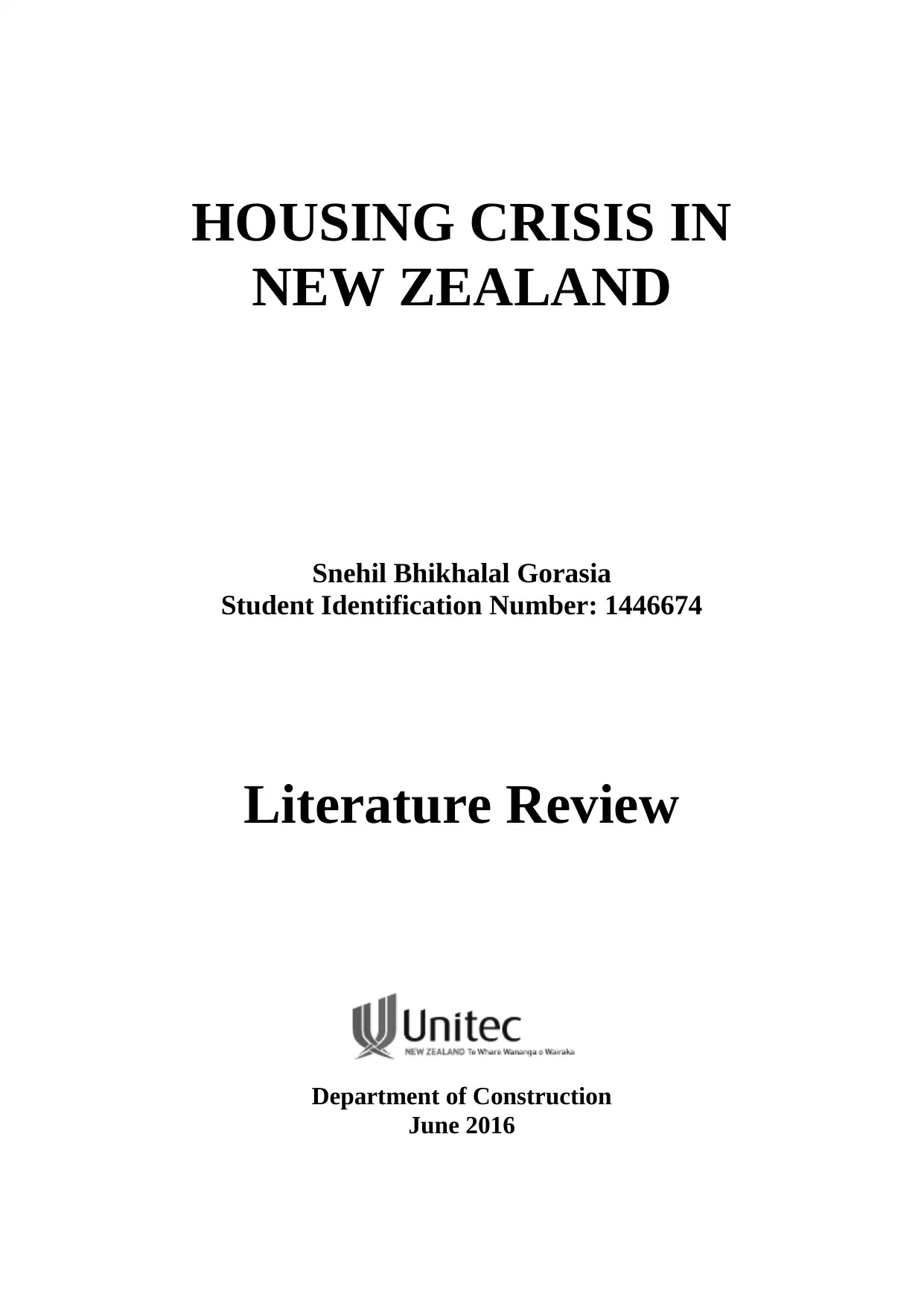
HOUSING CRISIS IN
NEW ZEALAND
Snehil Bhikhalal Gorasia
Student Identification Number: 1446674
Literature Review
Department of Construction
June 2016
NEW ZEALAND
Snehil Bhikhalal Gorasia
Student Identification Number: 1446674
Literature Review
Department of Construction
June 2016
Paraphrase This Document
Need a fresh take? Get an instant paraphrase of this document with our AI Paraphraser
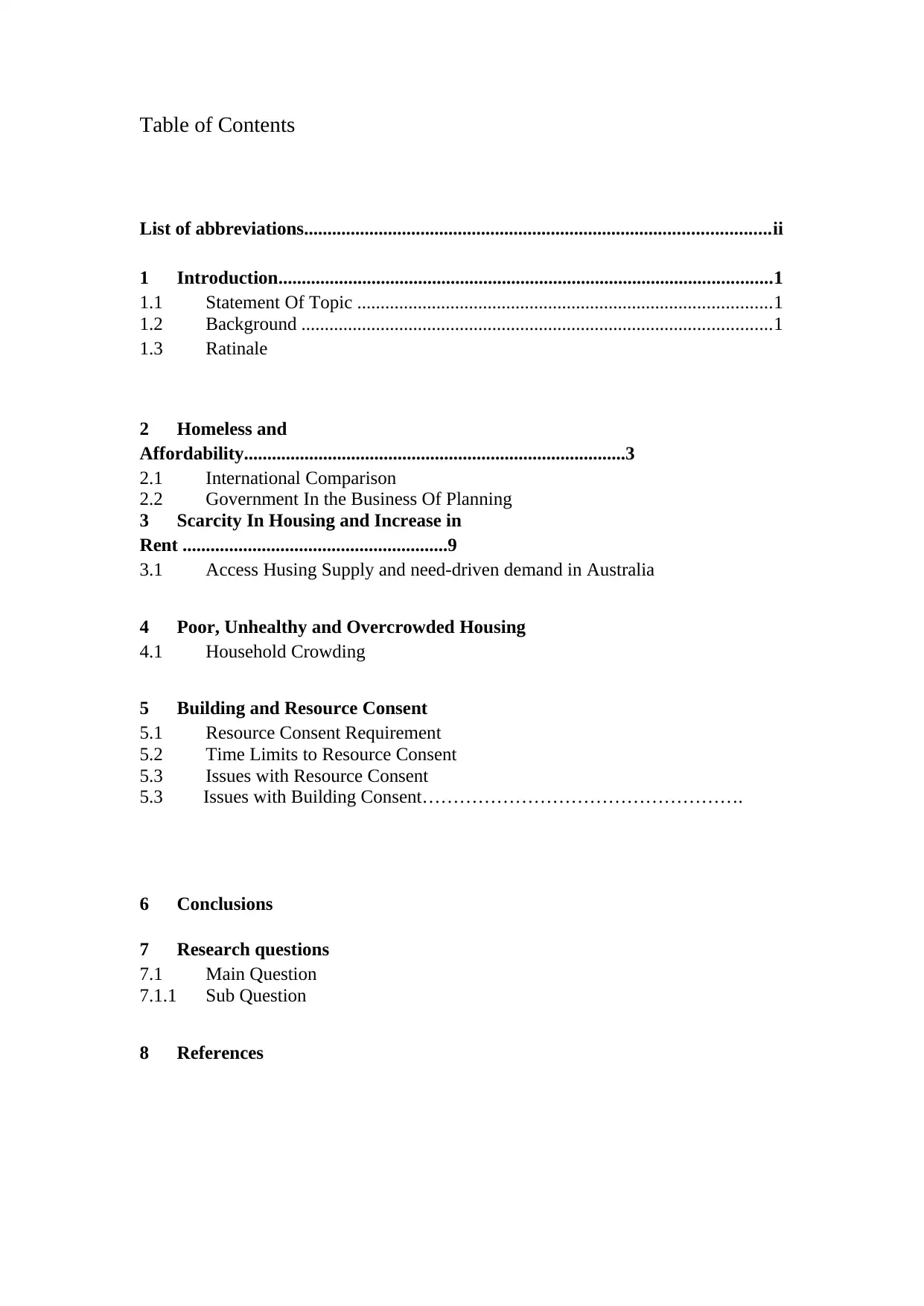
Table of Contents
List of abbreviations....................................................................................................ii
1 Introduction..........................................................................................................1
1.1 Statement Of Topic .........................................................................................1
1.2 Background .....................................................................................................1
1.3 Ratinale
2 Homeless and
Affordability..................................................................................3
2.1 International Comparison
2.2 Government In the Business Of Planning
3 Scarcity In Housing and Increase in
Rent .........................................................9
3.1 Access Husing Supply and need-driven demand in Australia
4 Poor, Unhealthy and Overcrowded Housing
4.1 Household Crowding
5 Building and Resource Consent
5.1 Resource Consent Requirement
5.2 Time Limits to Resource Consent
5.3 Issues with Resource Consent
5.3 Issues with Building Consent…………………………………………….
6 Conclusions
7 Research questions
7.1 Main Question
7.1.1 Sub Question
8 References
List of abbreviations....................................................................................................ii
1 Introduction..........................................................................................................1
1.1 Statement Of Topic .........................................................................................1
1.2 Background .....................................................................................................1
1.3 Ratinale
2 Homeless and
Affordability..................................................................................3
2.1 International Comparison
2.2 Government In the Business Of Planning
3 Scarcity In Housing and Increase in
Rent .........................................................9
3.1 Access Husing Supply and need-driven demand in Australia
4 Poor, Unhealthy and Overcrowded Housing
4.1 Household Crowding
5 Building and Resource Consent
5.1 Resource Consent Requirement
5.2 Time Limits to Resource Consent
5.3 Issues with Resource Consent
5.3 Issues with Building Consent…………………………………………….
6 Conclusions
7 Research questions
7.1 Main Question
7.1.1 Sub Question
8 References

List of abbreviations
MDH- Medium Density Housing
MDH- Medium Density Housing
⊘ This is a preview!⊘
Do you want full access?
Subscribe today to unlock all pages.

Trusted by 1+ million students worldwide
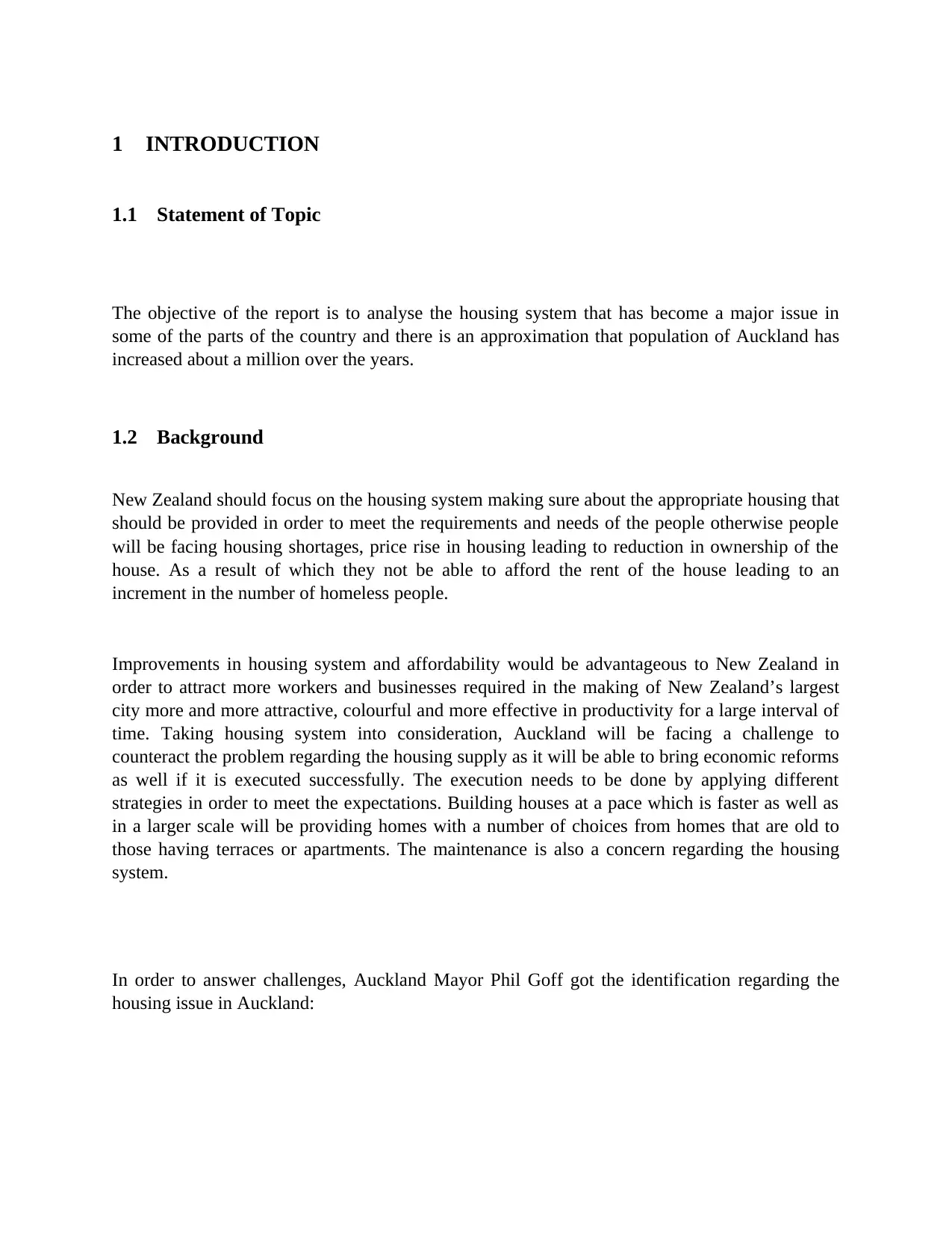
1 INTRODUCTION
1.1 Statement of Topic
The objective of the report is to analyse the housing system that has become a major issue in
some of the parts of the country and there is an approximation that population of Auckland has
increased about a million over the years.
1.2 Background
New Zealand should focus on the housing system making sure about the appropriate housing that
should be provided in order to meet the requirements and needs of the people otherwise people
will be facing housing shortages, price rise in housing leading to reduction in ownership of the
house. As a result of which they not be able to afford the rent of the house leading to an
increment in the number of homeless people.
Improvements in housing system and affordability would be advantageous to New Zealand in
order to attract more workers and businesses required in the making of New Zealand’s largest
city more and more attractive, colourful and more effective in productivity for a large interval of
time. Taking housing system into consideration, Auckland will be facing a challenge to
counteract the problem regarding the housing supply as it will be able to bring economic reforms
as well if it is executed successfully. The execution needs to be done by applying different
strategies in order to meet the expectations. Building houses at a pace which is faster as well as
in a larger scale will be providing homes with a number of choices from homes that are old to
those having terraces or apartments. The maintenance is also a concern regarding the housing
system.
In order to answer challenges, Auckland Mayor Phil Goff got the identification regarding the
housing issue in Auckland:
1.1 Statement of Topic
The objective of the report is to analyse the housing system that has become a major issue in
some of the parts of the country and there is an approximation that population of Auckland has
increased about a million over the years.
1.2 Background
New Zealand should focus on the housing system making sure about the appropriate housing that
should be provided in order to meet the requirements and needs of the people otherwise people
will be facing housing shortages, price rise in housing leading to reduction in ownership of the
house. As a result of which they not be able to afford the rent of the house leading to an
increment in the number of homeless people.
Improvements in housing system and affordability would be advantageous to New Zealand in
order to attract more workers and businesses required in the making of New Zealand’s largest
city more and more attractive, colourful and more effective in productivity for a large interval of
time. Taking housing system into consideration, Auckland will be facing a challenge to
counteract the problem regarding the housing supply as it will be able to bring economic reforms
as well if it is executed successfully. The execution needs to be done by applying different
strategies in order to meet the expectations. Building houses at a pace which is faster as well as
in a larger scale will be providing homes with a number of choices from homes that are old to
those having terraces or apartments. The maintenance is also a concern regarding the housing
system.
In order to answer challenges, Auckland Mayor Phil Goff got the identification regarding the
housing issue in Auckland:
Paraphrase This Document
Need a fresh take? Get an instant paraphrase of this document with our AI Paraphraser
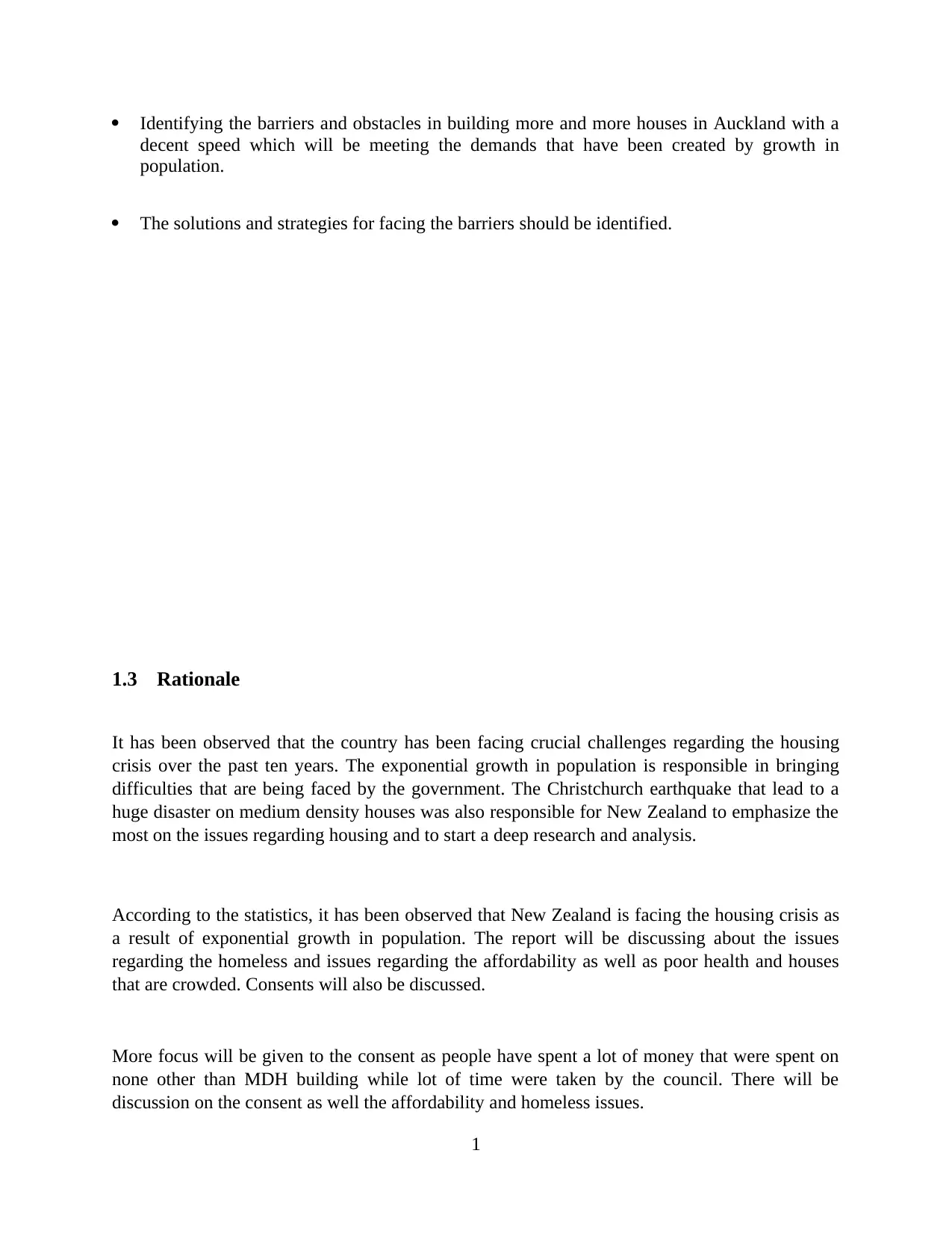
Identifying the barriers and obstacles in building more and more houses in Auckland with a
decent speed which will be meeting the demands that have been created by growth in
population.
The solutions and strategies for facing the barriers should be identified.
1.3 Rationale
It has been observed that the country has been facing crucial challenges regarding the housing
crisis over the past ten years. The exponential growth in population is responsible in bringing
difficulties that are being faced by the government. The Christchurch earthquake that lead to a
huge disaster on medium density houses was also responsible for New Zealand to emphasize the
most on the issues regarding housing and to start a deep research and analysis.
According to the statistics, it has been observed that New Zealand is facing the housing crisis as
a result of exponential growth in population. The report will be discussing about the issues
regarding the homeless and issues regarding the affordability as well as poor health and houses
that are crowded. Consents will also be discussed.
More focus will be given to the consent as people have spent a lot of money that were spent on
none other than MDH building while lot of time were taken by the council. There will be
discussion on the consent as well the affordability and homeless issues.
1
decent speed which will be meeting the demands that have been created by growth in
population.
The solutions and strategies for facing the barriers should be identified.
1.3 Rationale
It has been observed that the country has been facing crucial challenges regarding the housing
crisis over the past ten years. The exponential growth in population is responsible in bringing
difficulties that are being faced by the government. The Christchurch earthquake that lead to a
huge disaster on medium density houses was also responsible for New Zealand to emphasize the
most on the issues regarding housing and to start a deep research and analysis.
According to the statistics, it has been observed that New Zealand is facing the housing crisis as
a result of exponential growth in population. The report will be discussing about the issues
regarding the homeless and issues regarding the affordability as well as poor health and houses
that are crowded. Consents will also be discussed.
More focus will be given to the consent as people have spent a lot of money that were spent on
none other than MDH building while lot of time were taken by the council. There will be
discussion on the consent as well the affordability and homeless issues.
1
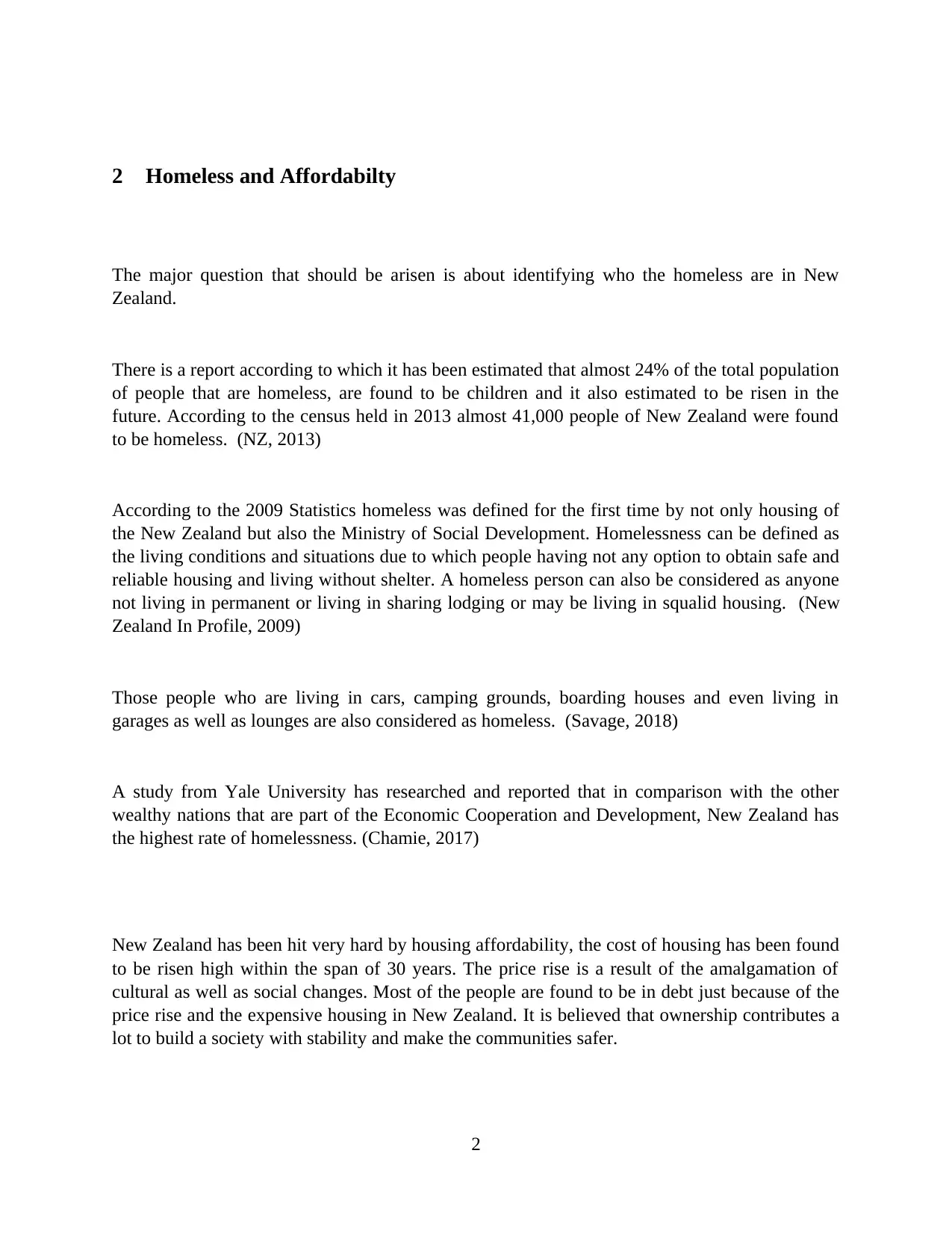
2 Homeless and Affordabilty
The major question that should be arisen is about identifying who the homeless are in New
Zealand.
There is a report according to which it has been estimated that almost 24% of the total population
of people that are homeless, are found to be children and it also estimated to be risen in the
future. According to the census held in 2013 almost 41,000 people of New Zealand were found
to be homeless. (NZ, 2013)
According to the 2009 Statistics homeless was defined for the first time by not only housing of
the New Zealand but also the Ministry of Social Development. Homelessness can be defined as
the living conditions and situations due to which people having not any option to obtain safe and
reliable housing and living without shelter. A homeless person can also be considered as anyone
not living in permanent or living in sharing lodging or may be living in squalid housing. (New
Zealand In Profile, 2009)
Those people who are living in cars, camping grounds, boarding houses and even living in
garages as well as lounges are also considered as homeless. (Savage, 2018)
A study from Yale University has researched and reported that in comparison with the other
wealthy nations that are part of the Economic Cooperation and Development, New Zealand has
the highest rate of homelessness. (Chamie, 2017)
New Zealand has been hit very hard by housing affordability, the cost of housing has been found
to be risen high within the span of 30 years. The price rise is a result of the amalgamation of
cultural as well as social changes. Most of the people are found to be in debt just because of the
price rise and the expensive housing in New Zealand. It is believed that ownership contributes a
lot to build a society with stability and make the communities safer.
2
The major question that should be arisen is about identifying who the homeless are in New
Zealand.
There is a report according to which it has been estimated that almost 24% of the total population
of people that are homeless, are found to be children and it also estimated to be risen in the
future. According to the census held in 2013 almost 41,000 people of New Zealand were found
to be homeless. (NZ, 2013)
According to the 2009 Statistics homeless was defined for the first time by not only housing of
the New Zealand but also the Ministry of Social Development. Homelessness can be defined as
the living conditions and situations due to which people having not any option to obtain safe and
reliable housing and living without shelter. A homeless person can also be considered as anyone
not living in permanent or living in sharing lodging or may be living in squalid housing. (New
Zealand In Profile, 2009)
Those people who are living in cars, camping grounds, boarding houses and even living in
garages as well as lounges are also considered as homeless. (Savage, 2018)
A study from Yale University has researched and reported that in comparison with the other
wealthy nations that are part of the Economic Cooperation and Development, New Zealand has
the highest rate of homelessness. (Chamie, 2017)
New Zealand has been hit very hard by housing affordability, the cost of housing has been found
to be risen high within the span of 30 years. The price rise is a result of the amalgamation of
cultural as well as social changes. Most of the people are found to be in debt just because of the
price rise and the expensive housing in New Zealand. It is believed that ownership contributes a
lot to build a society with stability and make the communities safer.
2
⊘ This is a preview!⊘
Do you want full access?
Subscribe today to unlock all pages.

Trusted by 1+ million students worldwide
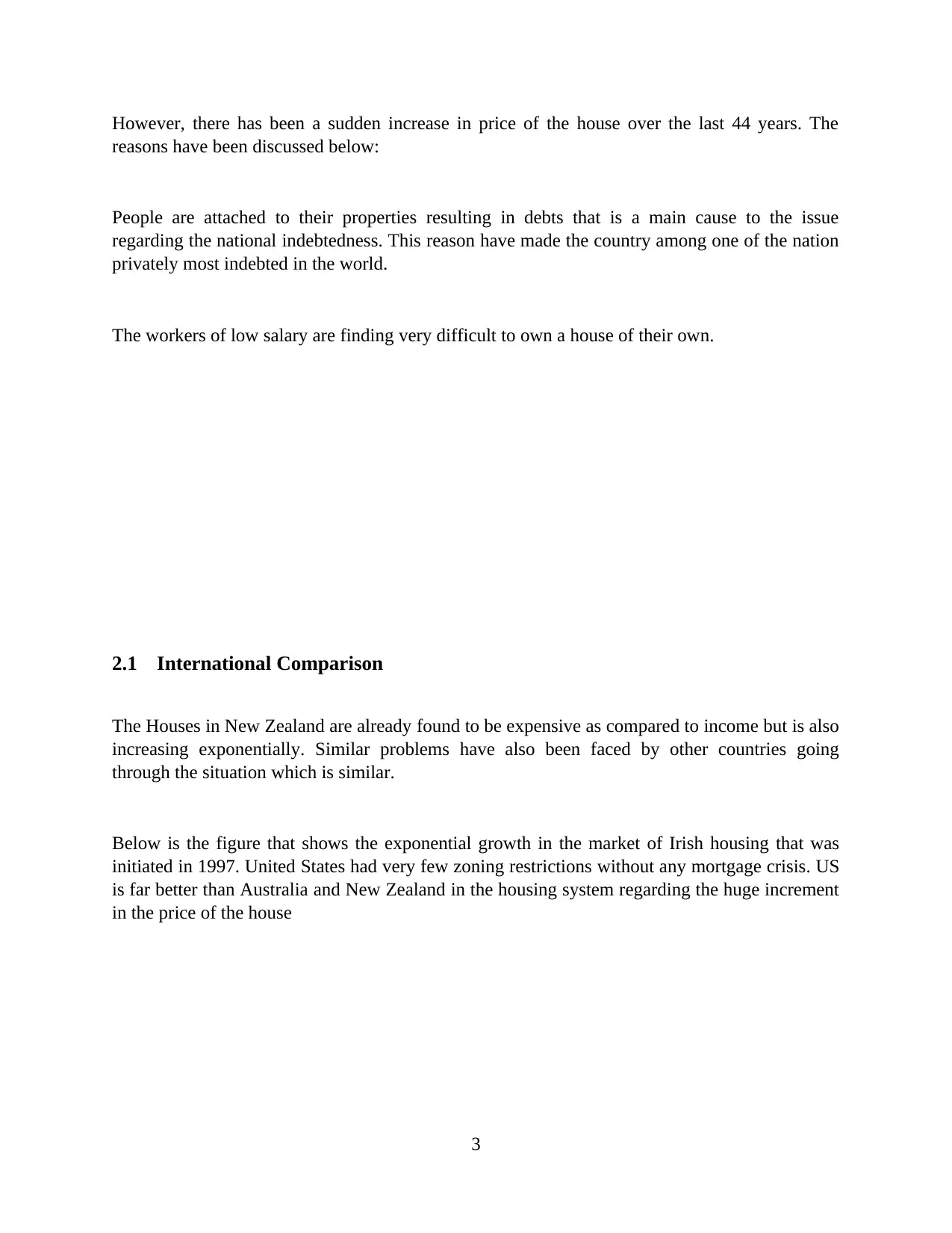
However, there has been a sudden increase in price of the house over the last 44 years. The
reasons have been discussed below:
People are attached to their properties resulting in debts that is a main cause to the issue
regarding the national indebtedness. This reason have made the country among one of the nation
privately most indebted in the world.
The workers of low salary are finding very difficult to own a house of their own.
2.1 International Comparison
The Houses in New Zealand are already found to be expensive as compared to income but is also
increasing exponentially. Similar problems have also been faced by other countries going
through the situation which is similar.
Below is the figure that shows the exponential growth in the market of Irish housing that was
initiated in 1997. United States had very few zoning restrictions without any mortgage crisis. US
is far better than Australia and New Zealand in the housing system regarding the huge increment
in the price of the house
3
reasons have been discussed below:
People are attached to their properties resulting in debts that is a main cause to the issue
regarding the national indebtedness. This reason have made the country among one of the nation
privately most indebted in the world.
The workers of low salary are finding very difficult to own a house of their own.
2.1 International Comparison
The Houses in New Zealand are already found to be expensive as compared to income but is also
increasing exponentially. Similar problems have also been faced by other countries going
through the situation which is similar.
Below is the figure that shows the exponential growth in the market of Irish housing that was
initiated in 1997. United States had very few zoning restrictions without any mortgage crisis. US
is far better than Australia and New Zealand in the housing system regarding the huge increment
in the price of the house
3
Paraphrase This Document
Need a fresh take? Get an instant paraphrase of this document with our AI Paraphraser
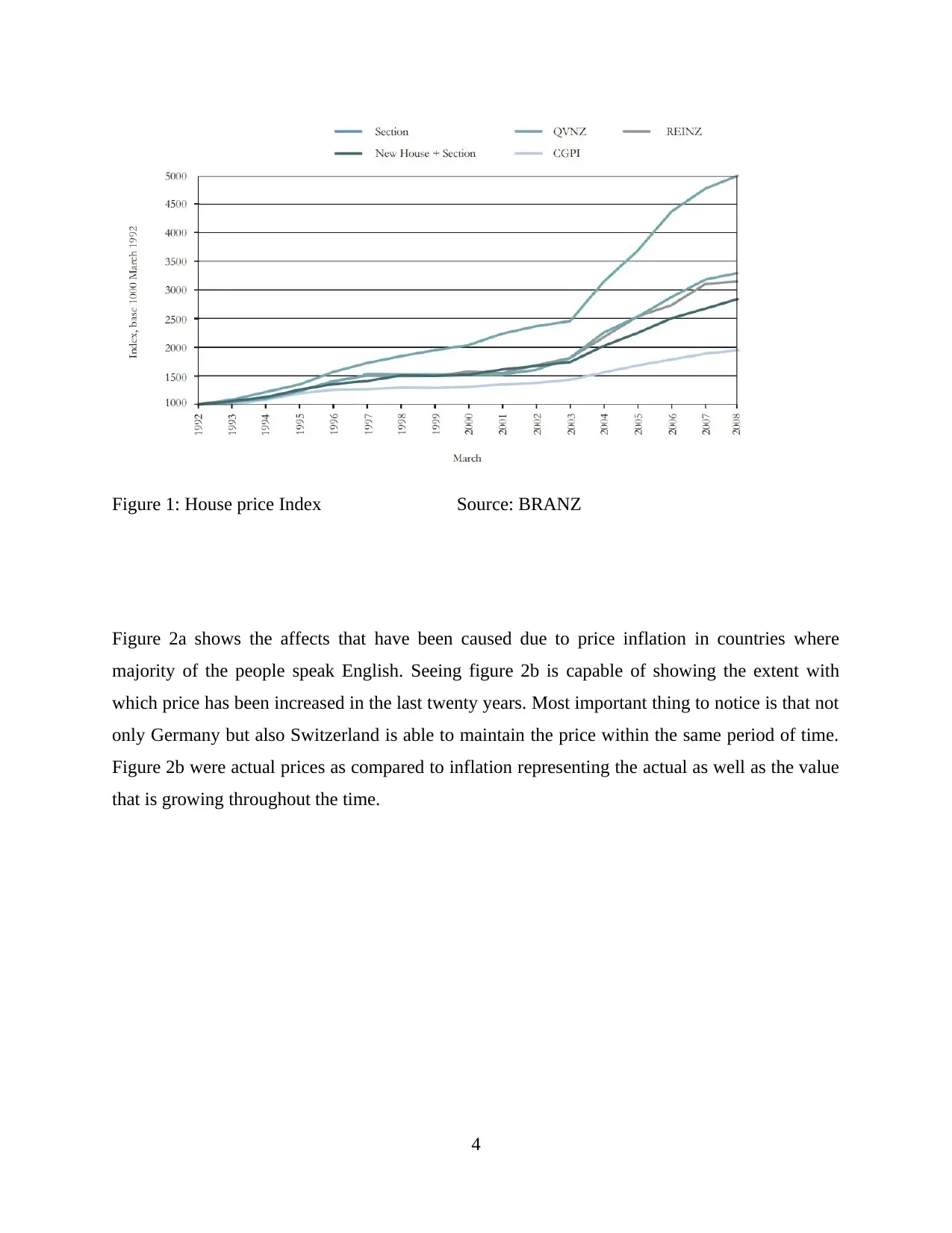
Figure 1: House price Index Source: BRANZ
Figure 2a shows the affects that have been caused due to price inflation in countries where
majority of the people speak English. Seeing figure 2b is capable of showing the extent with
which price has been increased in the last twenty years. Most important thing to notice is that not
only Germany but also Switzerland is able to maintain the price within the same period of time.
Figure 2b were actual prices as compared to inflation representing the actual as well as the value
that is growing throughout the time.
4
Figure 2a shows the affects that have been caused due to price inflation in countries where
majority of the people speak English. Seeing figure 2b is capable of showing the extent with
which price has been increased in the last twenty years. Most important thing to notice is that not
only Germany but also Switzerland is able to maintain the price within the same period of time.
Figure 2b were actual prices as compared to inflation representing the actual as well as the value
that is growing throughout the time.
4
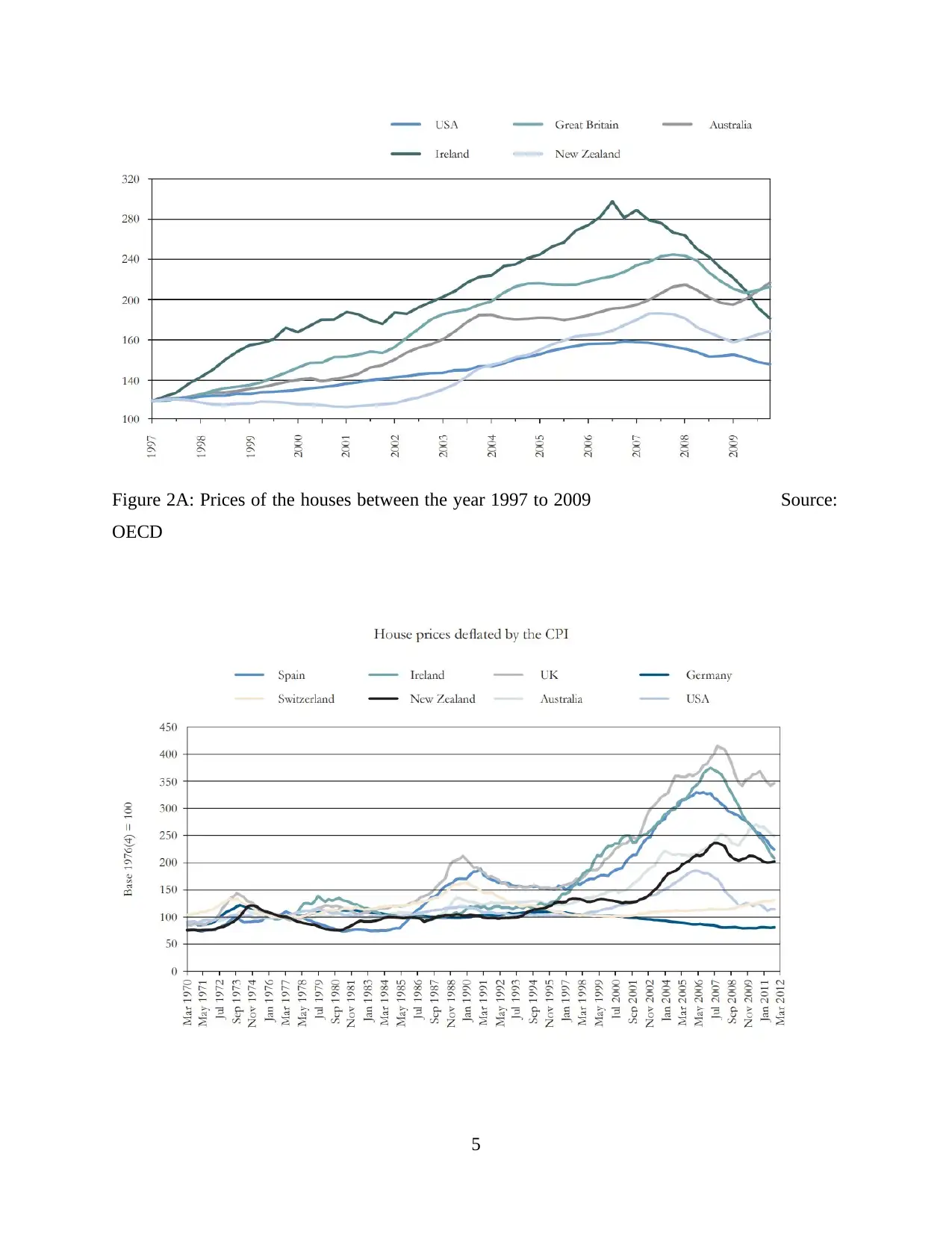
Figure 2A: Prices of the houses between the year 1997 to 2009 Source:
OECD
5
OECD
5
⊘ This is a preview!⊘
Do you want full access?
Subscribe today to unlock all pages.

Trusted by 1+ million students worldwide

Figure 2B: House prices in different countries across the world from 1970 to 2012
Source: Bank for International Settlement/ authors’ calculations
The Gush in house prices in New Zealand in the 2000s.
The sudden exponential growth in price in the country in the early period of 2000s has
influenced the demands of housing. Across the globe, very few nations supported a huge
increment in credit. Irrespective of the global development there are some factors causing an
increase in demand:
Exponential growth in the population happened within the last ten years.
It has been found that almost 10000 people are migrating every year with a maximum of
40000 people in 2003
GDP per capita has witnessed a growth of 15% within the span of the time from
December 2000 to June 2007. People with decent income can afford quality housing.
Therefore, quality housing is limited due to income barrier
Rate of interest were found to be very low from 2002 to 2003, countries in OCR had
almost 5%. The reduction in pressure caused by inflation is because of the fall in the
price goods that are imported at low prices from Asian manufacturers. (Bollard and
Smith, 2005)
It was found to be very low till 2003 but grew slowly after that. An exchange rate which
is very low may be helpful in attracting more and more people that are overseas buyers.
6
Source: Bank for International Settlement/ authors’ calculations
The Gush in house prices in New Zealand in the 2000s.
The sudden exponential growth in price in the country in the early period of 2000s has
influenced the demands of housing. Across the globe, very few nations supported a huge
increment in credit. Irrespective of the global development there are some factors causing an
increase in demand:
Exponential growth in the population happened within the last ten years.
It has been found that almost 10000 people are migrating every year with a maximum of
40000 people in 2003
GDP per capita has witnessed a growth of 15% within the span of the time from
December 2000 to June 2007. People with decent income can afford quality housing.
Therefore, quality housing is limited due to income barrier
Rate of interest were found to be very low from 2002 to 2003, countries in OCR had
almost 5%. The reduction in pressure caused by inflation is because of the fall in the
price goods that are imported at low prices from Asian manufacturers. (Bollard and
Smith, 2005)
It was found to be very low till 2003 but grew slowly after that. An exchange rate which
is very low may be helpful in attracting more and more people that are overseas buyers.
6
Paraphrase This Document
Need a fresh take? Get an instant paraphrase of this document with our AI Paraphraser

The price rise was thriving and was spreading more and more across the nation. Some exceptions
were found that were important. Houses existing in Queenstown, wellington and Auckland were
found to be more costly earlier in 2000.
2.2 Government in the business of planning
A planning regulation was held in the mid of 1950 regarding the housing in New Zealand.
Planning scheme offered by the district were emerging in the areas that were urban. They did the
imagination of the classification according to the best it can yield. Everyone needs to get the
permission from the local authority in order to get any departure. Construction of a house is still
an easy plan to execute. It must be kept in mind about the basic rules that should be followed:
restrictions in height, minimum levels of ceiling, and spacing of six feet from the boundary so as
to avoid inconvenience faced by the neighbors. Some hygienic requirements had also been
introduced. After a horrific plague spread in Auckland in the year of1900, first Minister of
Health (British Empire) send out the medical officers in order to check and examine the
conditions in every part of the area infected. A report showing the unsanitary conditions of the
place had become a region of concern, and some other problems were also discovered in the
7
were found that were important. Houses existing in Queenstown, wellington and Auckland were
found to be more costly earlier in 2000.
2.2 Government in the business of planning
A planning regulation was held in the mid of 1950 regarding the housing in New Zealand.
Planning scheme offered by the district were emerging in the areas that were urban. They did the
imagination of the classification according to the best it can yield. Everyone needs to get the
permission from the local authority in order to get any departure. Construction of a house is still
an easy plan to execute. It must be kept in mind about the basic rules that should be followed:
restrictions in height, minimum levels of ceiling, and spacing of six feet from the boundary so as
to avoid inconvenience faced by the neighbors. Some hygienic requirements had also been
introduced. After a horrific plague spread in Auckland in the year of1900, first Minister of
Health (British Empire) send out the medical officers in order to check and examine the
conditions in every part of the area infected. A report showing the unsanitary conditions of the
place had become a region of concern, and some other problems were also discovered in the
7

suburban area. This caused risks to cleanliness of the fresh water, and there was a contribution of
diarrhea for killing infants. (works, 2012) Governments introduces severer requirements for
health, most importantly in the case of influenza epidemic that occurred in 1918. In the later
period of 1940, a national survey related to housing revealed a total of 44,000 homes in New
Zealand that were lacking in significant facilities like power and supplied water (Better Local
Government, 2014). Before the period of 1950s, most of the rules and regulations were set by the
government at the Centre while local authority got some rules and regulation lesser as compared
to the rules governs by the central body of the government. The Housing Act of 1919 stated
calculations of money of the government that can be borrowed by the local authorities in order to
upright workers’ house. But there are some exceptions that the city councils that are in developed
cities like Auckland build houses for the purpose of selling it to the workers. (Govt responds to
housing affordability report, 2012). Some of the city mayors tested and examined housing to
make it affordable but the need of grants would be highly recommended. In the earlier years of
the twentieth century, councils were being pressurized in order to do the construction of
sewerage systems. Eventually, the central body of the government has extended grants for the
establishment of drainage by sewers. Statistics regarding the mortality of infants have been found
to be improved exponentially. Some of the questions have been arisen from the end of some
extremists.
In the earlier period of twentieth century, discussion on town planning and housing were taking
place in US and Europe, this was also started to take place in New Zealand. But there was not
any existence of acts related to town planning until 1926. That lawmaking required areas and
townships containing 1,000 or more people in appointing a director who would initiate the
planning of the town and start a scheme and wait for its approval by Public Works Department
before 1931. However, most of the councils were not able in recruiting the planners of the town
resulted in extensions that are repeated again and again for the registration of the schemes. Then
World War II began. By the year of 1953, there were only a total of 17 councils left out of 100
that were pertained to the planning system. Town planning was not definite at that time. The Act
of 1926 stated that a planning should be done in such a way that it takes care of certain aspects
like health, advancement, amenity in order to promote them.
8
diarrhea for killing infants. (works, 2012) Governments introduces severer requirements for
health, most importantly in the case of influenza epidemic that occurred in 1918. In the later
period of 1940, a national survey related to housing revealed a total of 44,000 homes in New
Zealand that were lacking in significant facilities like power and supplied water (Better Local
Government, 2014). Before the period of 1950s, most of the rules and regulations were set by the
government at the Centre while local authority got some rules and regulation lesser as compared
to the rules governs by the central body of the government. The Housing Act of 1919 stated
calculations of money of the government that can be borrowed by the local authorities in order to
upright workers’ house. But there are some exceptions that the city councils that are in developed
cities like Auckland build houses for the purpose of selling it to the workers. (Govt responds to
housing affordability report, 2012). Some of the city mayors tested and examined housing to
make it affordable but the need of grants would be highly recommended. In the earlier years of
the twentieth century, councils were being pressurized in order to do the construction of
sewerage systems. Eventually, the central body of the government has extended grants for the
establishment of drainage by sewers. Statistics regarding the mortality of infants have been found
to be improved exponentially. Some of the questions have been arisen from the end of some
extremists.
In the earlier period of twentieth century, discussion on town planning and housing were taking
place in US and Europe, this was also started to take place in New Zealand. But there was not
any existence of acts related to town planning until 1926. That lawmaking required areas and
townships containing 1,000 or more people in appointing a director who would initiate the
planning of the town and start a scheme and wait for its approval by Public Works Department
before 1931. However, most of the councils were not able in recruiting the planners of the town
resulted in extensions that are repeated again and again for the registration of the schemes. Then
World War II began. By the year of 1953, there were only a total of 17 councils left out of 100
that were pertained to the planning system. Town planning was not definite at that time. The Act
of 1926 stated that a planning should be done in such a way that it takes care of certain aspects
like health, advancement, amenity in order to promote them.
8
⊘ This is a preview!⊘
Do you want full access?
Subscribe today to unlock all pages.

Trusted by 1+ million students worldwide
1 out of 27
Related Documents
Your All-in-One AI-Powered Toolkit for Academic Success.
+13062052269
info@desklib.com
Available 24*7 on WhatsApp / Email
![[object Object]](/_next/static/media/star-bottom.7253800d.svg)
Unlock your academic potential
Copyright © 2020–2025 A2Z Services. All Rights Reserved. Developed and managed by ZUCOL.





